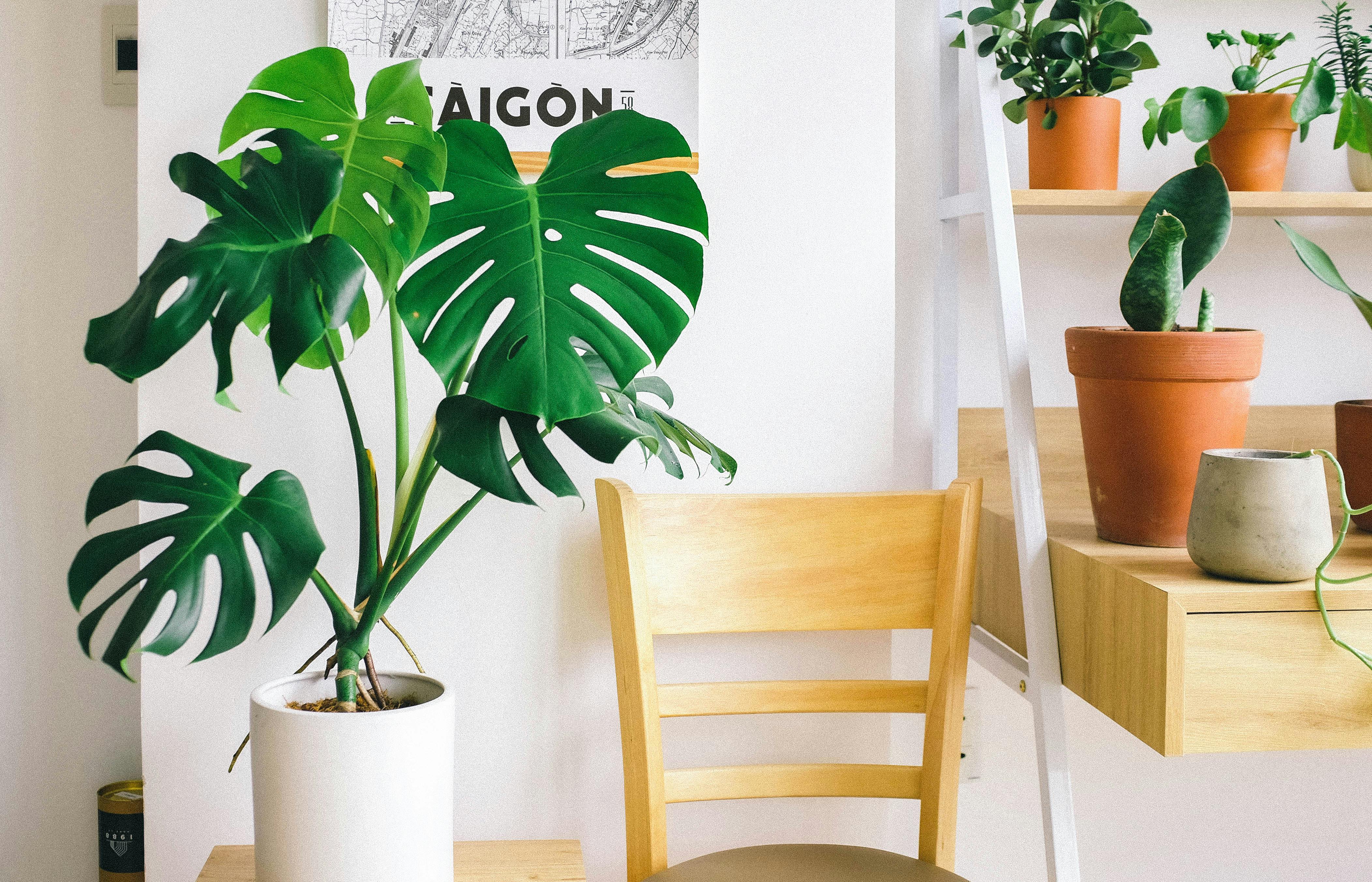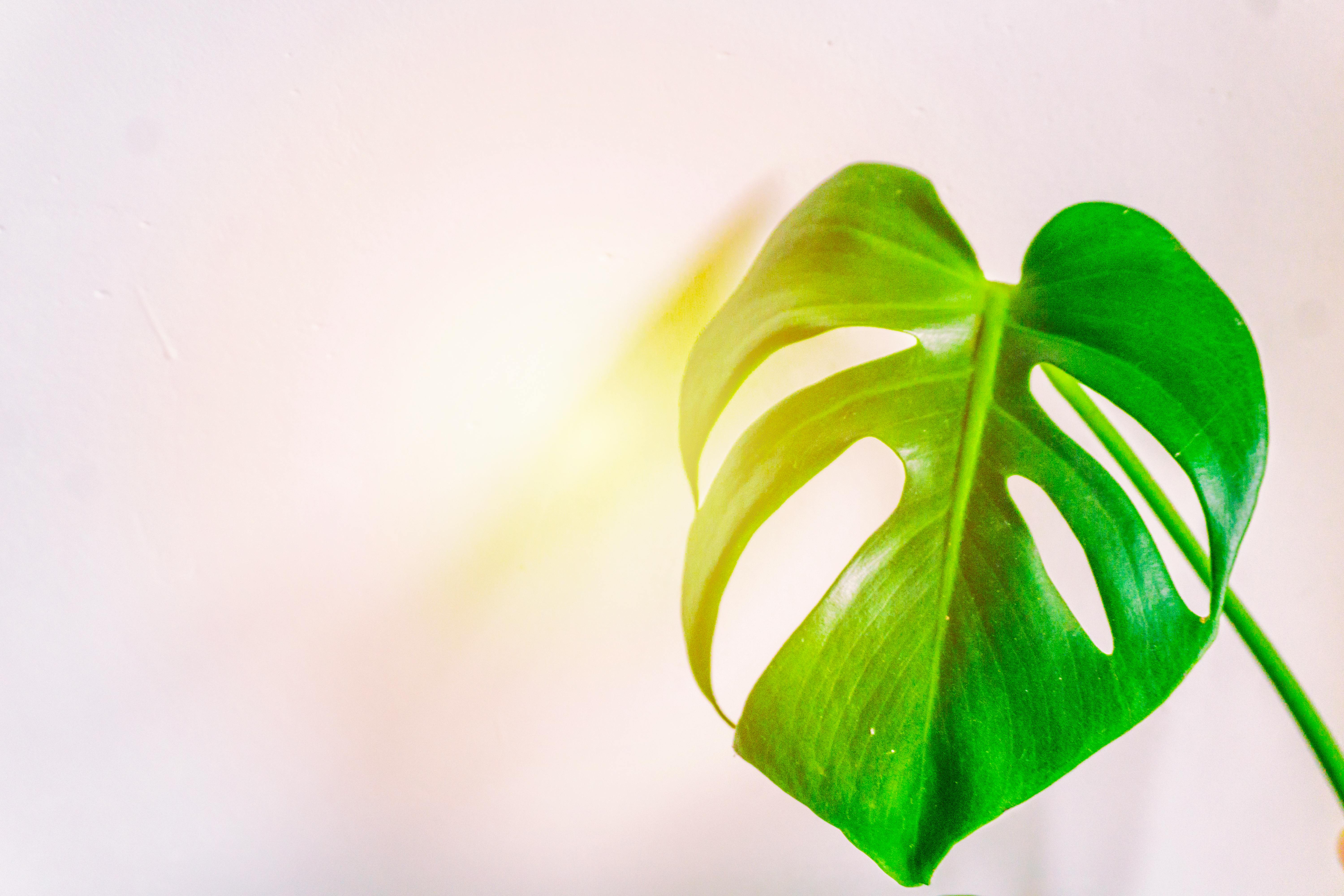Monstera plants are one of the most popular houseplants around, and they look great in any home. Planting a Monstera cutting is an easy way to propagate your plant and create more greenery in your home. In this article, we’ll explain how to plant a Monstera cutting so you can enjoy a full, lush Monstera plant.To plant a monstera cutting, you will need a pot with drainage holes, a well-draining soil or potting mix, a pair of sharp scissors or pruning shears, and water. Optional items include a stake to support the stem as it grows and an all-purpose fertilizer to help nourish the cutting while it roots.
Choosing the Right Potting Mix for Monstera Cuttings
Finding the right potting mix for monstera cuttings is essential for successful propagation. A good quality potting mix ensures that your cuttings have enough nutrients to survive and thrive as they begin to root. It’s important to consider factors such as drainage, aeration, and moisture retention when selecting a potting mix. Here are some tips on selecting the best potting mix for monstera cuttings.
When choosing a potting mix for monstera cuttings, it’s important to consider how well the soil drains and aerates. Monstera cuttings need a well-draining soil so that the roots can breathe and take up water easily. A soil with too much clay or silt can lead to root rot or poor growth. Look for a soil with an organic component such as peat moss, composted bark, or coconut coir. These ingredients will help retain moisture while allowing air to circulate freely throughout the soil.
It’s also important to consider the amount of nutrients in the soil. Monstera cuttings need plenty of nutrients to grow strong roots and healthy foliage. Look for a soil blend with slow-release fertilizer added or use liquid fertilizer regularly during propagation. Additionally, adding some perlite or vermiculite will help retain moisture while providing extra aeration in the soil.
Finally, make sure you choose a light potting mix that won’t compact over time. A lightweight mix helps ensure your monstera cuttings will have access to oxygen and water without becoming waterlogged or soggy. It will also make it easier for you to repot your plants if necessary.
By following these tips you can be sure that you’re choosing the right potting mix for your monstera cuttings and giving them the best chance of successful propagation!
Preparing the Pot and Soil for Planting
When planting houseplants, it is important to prepare both the pot and the soil to ensure that your plants have the best chance of thriving. First, you will need to select an appropriate pot for your plant. The pot should be slightly larger than the root ball of your plant, with plenty of room for growth. You can also choose a pot with drainage holes in the bottom if desired. Once you choose a pot, make sure it is washed thoroughly before planting.
Next, you will need to prepare your soil mix. Make sure that it is lightweight and well-draining with plenty of organic matter. You can either purchase pre-made soil mixes at your local garden center or create your own mixture using peat moss, compost, and perlite or vermiculite. Once you have chosen or created a soil mix, make sure it is moist before adding it to the pot.
Finally, add some fertilizer to the soil mix before planting your houseplant. This will ensure that your plant has all of the nutrients it needs to thrive. When adding fertilizer, be sure to follow package directions carefully as overfertilizing can harm your plants. With a properly prepared pot and soil mix, you are now ready to plant your houseplant!
Planting the Monstera Cutting
Monstera is a tropical plant that is popular for its large, heart-shaped leaves. It’s also known as the Swiss cheese plant because of its interesting leaf pattern. For many gardeners, propagating monstera cuttings is a great way to add more of these beautiful plants to their outdoor or indoor spaces. To successfully propagate monstera cuttings, there are several steps that should be followed.
The first step in planting the monstera cutting is to find a healthy cutting with at least two or three leaves. The best time to take cuttings from established monstera plants is during the spring or summer months when the plant is actively growing. Once you have selected your cutting, it’s time to prepare it for planting. You’ll need to carefully remove any excess leaves and then dip the cut end in a rooting hormone powder or gel before placing it in moist soil. This will help encourage new root growth and give the cutting a better chance of survival.
Next, you’ll need to choose a pot that has good drainage and fill it with an appropriate soil mix for monstera plants. A well-draining potting soil with added perlite or sand is ideal for this type of plant. Place your cutting into the soil and lightly press down around it so that it’s firmly planted in place. Water your newly planted monstera cutting until the soil is saturated and then allow it to drain completely before adding more water.
Finally, you’ll need to provide some warmth and humidity for your new cutting so that it can take root and start growing. Keep your newly planted monstera in a warm spot where there’s plenty of indirect sunlight and mist regularly with warm water to keep the soil moist but not soggy. With consistent care, your monstera cutting should begin growing within a few weeks, producing new leaves and eventually forming its own root system.
How to Water a Monstera Cutting
Watering a monstera cutting is an important part of caring for this tropical houseplant. Monsteras are native to tropical environments and require more frequent watering than other plants. To ensure your cutting grows healthy roots and thrives, it’s important to water it properly. Here are some tips on how to water a monstera cutting.
First, you’ll need to choose a potting mix that is specifically formulated for tropical plants. This mix should be light and airy, with good drainage properties. It should also contain some organic matter, such as compost or peat moss, to help retain moisture.
Once you’ve chosen your potting mix, it’s time to water your monstera cutting. It’s best to use lukewarm water that has been sitting out for at least 24 hours so that any chlorine or other additives have had a chance to evaporate off. Slowly pour the water around the base of the plant until the soil is evenly moistened; avoid pouring too much water directly on top of the cutting as this can cause root rot or other issues.
After watering your monstera cutting, it’s important to monitor the soil moisture level closely in order to determine when it needs more water. Stick your finger into the soil up to your first knuckle; if it feels dry, then it’s time to water again. If it feels slightly damp but not wet, then you don’t need to add any more water yet.
Finally, remember that monsteras thrive in humid environments so you may want to mist your plant occasionally with lukewarm water if the air in your home is particularly dry. This will help keep your plant from drying out too quickly between watering sessions and ensure it remains healthy and happy!

When to Fertilize a Monstera Cutting
Monstera cuttings are a popular houseplant that can be propagated from a single cutting, which is easy and cost-effective. However, when fertilizing a Monstera cutting, there are a few things to keep in mind to ensure it grows healthy and strong. To get the best results, you should fertilize your Monstera cutting during the growing season.
The growing season for Monstera cuttings is typically from April to September in most climates. During this time, you should fertilize your cutting once every two weeks with an all-purpose fertilizer. This will help ensure that your Monstera cutting has enough nutrients to grow and thrive. Make sure to dilute the fertilizer as recommended on the package and water your plant before applying the fertilizer so that it can absorb it better.
It’s also important to be aware of how much fertilizer you are applying. Too much fertilizer can burn the roots of your Monstera cutting and cause it stress, so make sure you follow the directions on the package carefully. Additionally, avoid fertilizing during winter months, as this can cause damage to your plant if done incorrectly.
Finally, be sure to monitor your Monstera cutting closely during its growing season; if you notice any signs of distress or poor growth, adjust your fertilization schedule accordingly or seek advice from a professional plant expert. With proper care and attention, your Monstera cutting will thrive and bring plenty of beauty into your home!
Where to Place Your Monstera Cutting
Monstera cuttings are a great way to propagate your monstera plant. When you’ve rooted your cutting, the next step is finding the perfect place for it in your home. Ideally, you should look for an area that provides bright indirect light. You should also make sure that the air temperature is between 65-85°F (18-29°C). If you can, try to find a spot with high humidity levels; this will help your new cutting thrive. If humidity is an issue, consider investing in a humidifier or using a pebble tray to increase the ambient humidity around your Monstera cutting.
Don’t forget to give your Monstera plenty of room to grow! Make sure that you have enough space on either side of the pot for it to spread and climb up a trellis or other support structure. If you plan on growing multiple plants in one area, make sure they are spaced far enough apart so that they don’t compete for light or resources. Lastly, be sure to check that the soil drains well and is not overly wet; this will help prevent root rot or other diseases from taking hold of your cutting.
With these tips in mind, you should be able to find the perfect spot for your Monstera cutting and watch it thrive! Happy planting!
How Much Light Does a Monstera Cutting Require?
Monstera cuttings require bright, indirect light for best results. Too much direct sunlight can scorch the leaves, so it is important to keep the cutting out of direct sunlight. Place the cutting in a spot that gets plenty of indirect light throughout the day, such as near a north- or east-facing window. Make sure that there is good air circulation around the plant to prevent fungal diseases from developing. If supplemental lighting is necessary, then fluorescent lights are recommended for providing adequate light without causing leaf burn. A Monstera cutting will also benefit from being placed in an area with high humidity, such as a bathroom with a shower or kitchen with a sink.

Conclusion
Monstera cuttings are an easy and cost-effective way to propagate this popular houseplant. Cuttings can be taken from any mature plant and rooted in water, soil or a combination of the two. When planting in soil, make sure to use a well-draining potting mix and provide ample light. By following these steps, your Monstera cutting will be off to a great start!
Monstera plants are fairly low maintenance and can make a great addition to any home or office space. With proper care, they can thrive for many years! With their unique split leaves and tropical flair, Monsteras are sure to bring a bit of the exotic indoors.

